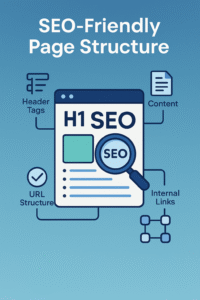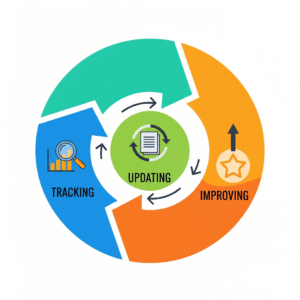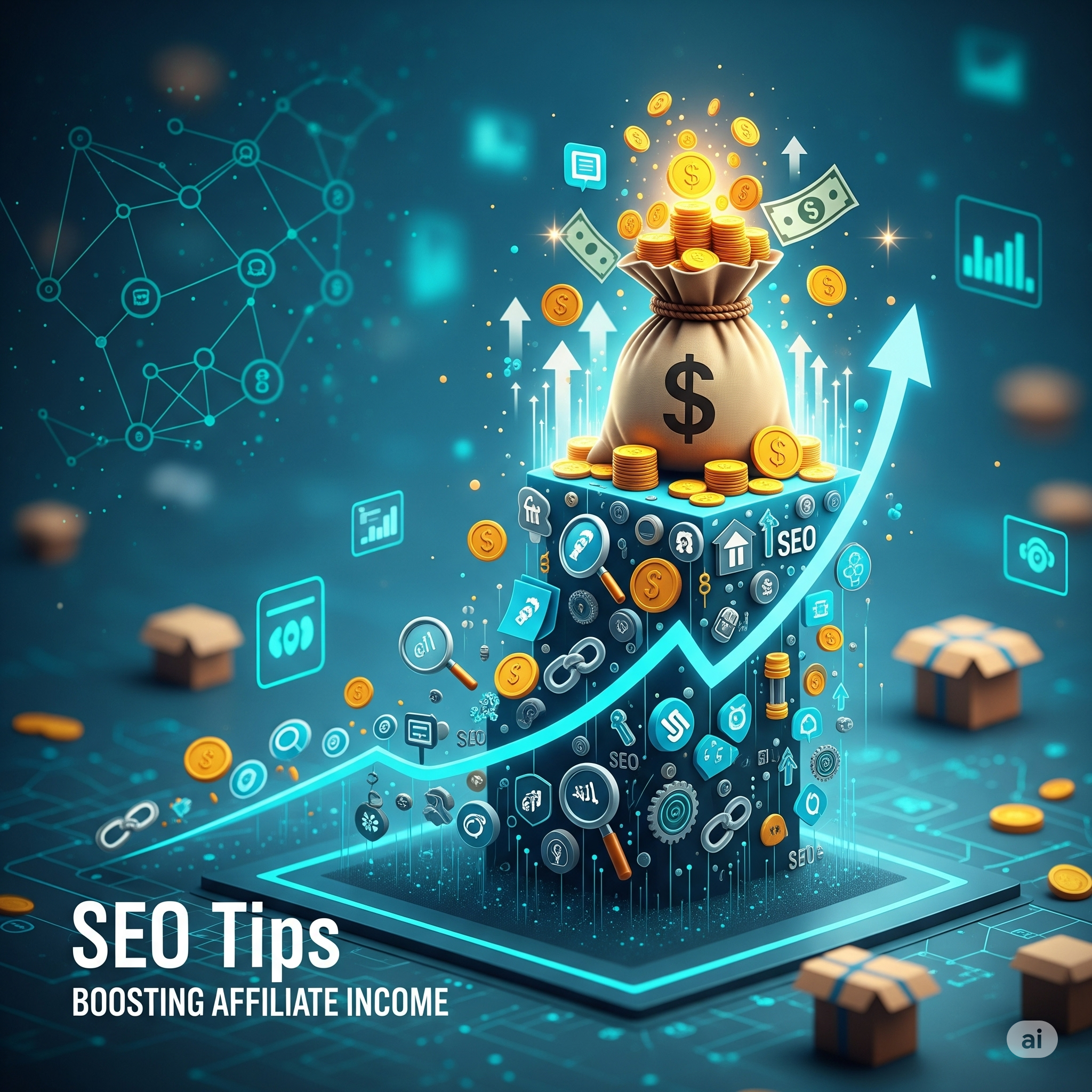6 Proven SEO Tips to Boost Your Affiliate Marketing Income
We may earn money or products from the companies mentioned in this post.
How to Use 6 Proven SEO Tips to Grow Your Affiliate Marketing Income
Welcome! If you’ve been pouring your time into creating content and sharing affiliate offers but aren’t seeing the clicks or commissions you hoped for, you’re in the right place.
The truth is, even great content can struggle without smart SEO behind it. Search engine optimization isn’t just about ranking higher—it’s about getting your ideal audience to your site, building trust, and turning readers into buyers.
These 6 SEO tips are simple to follow, don’t require a tech degree, and can make a real difference to your affiliate marketing income.
Whether you’re just starting or you’ve been doing this for years, you’ll find practical steps you can use today.
Step 1: Pick Smart Keywords—and Match Their Intent
Keyword research is the foundation of SEO success. But here’s the key—don’t just pick high-volume terms and hope for the best.
You want keywords that match what your audience is *actually* searching for and ready to act on.
Focus on Buyer-Intent Keywords
Buyer-intent keywords are search phrases that signal someone is ready to make a purchase.
For example:
- Best running shoes for beginners
- Affordable video editing software for YouTube
These phrases are gold because the person searching is already close to buying.
Use Long-Tail Keywords
Long-tail keywords are longer, more specific search terms. They often have less competition, which makes them easier to rank for.
For example:
Instead of “running shoes,” go for “lightweight running shoes for wide feet.”
This targets a smaller audience—but one that’s far more likely to click and convert.
Match Search Intent
Always make sure your content type fits the intent behind the keyword.
Informational intent: People want to learn something (“How to train for a 5K run”).
Commercial intent: They’re researching before buying (“Best budget 4K cameras”).
Transactional intent: They’re ready to purchase (“Buy Nikon Z6 II camera online”).
If you serve the wrong intent, you’ll get clicks but no conversions.

Step 2: Build a Simple, SEO-Friendly Page Structure
Google—and your readers—need to be able to navigate your site easily. A well-structured website isn’t just for looks; it helps search engines understand what your content is about.
Create a Clear Hierarchy
Organize your site like this:
Homepage → Main Categories → Individual Posts
This structure helps readers find what they’re looking for and signals to Google how your content is related.
Use Headings the Right Way
Your page should have:
- One H1 tag (your main title) with your primary keyword
- H2 and H3 subheadings to break up topics and make the page scannable
Headings help both readers and search engines understand the flow of your content.
Keep Paragraphs Short
Online readers don’t like big text walls. Use short paragraphs, bullet points, and visuals to keep them engaged.

Step 3: Write Content That Earns Links and Trust
In affiliate marketing, trust is everything. If your readers don’t believe you, they won’t click your links—or they’ll click and leave without buying.
Go Beyond the Basics
Anyone can write “Top 10 Laptops for Bloggers.” What makes *your* version worth reading?
- Add personal experiences or test results
- Include your own photos or screenshots
- Share mini case studies of what worked for you
Be Transparent
If you earn a commission, tell your readers. A simple FTC disclosure builds credibility. Being upfront can actually make people more willing to support you.
Create Link-Worthy Content
When you share unique data, clear tutorials, or helpful visuals, other sites are more likely to link back to you.
Example: Create an infographic comparing features of two popular products. Other bloggers may use it and credit you.
Step 4: Get the Basics Right—Fast & Mobile First
A slow or clunky site can undo all your SEO efforts. Google considers user experience when ranking sites, so speed and mobile usability are critical.
Improve Page Speed
- Use compressed images (TinyPNG or ShortPixel can help)
- Minimize unnecessary plugins
- Use a fast, reliable host (SiteGround and Wealthy Affiliate hosting are solid options)
Make Your Site Mobile-Friendly
More than half of internet traffic comes from mobile devices. Use a responsive theme and check how your pages look on smaller screens.
Use SEO Basics on Every Page
- Add descriptive alt text to images
- Write compelling meta descriptions (under 160 characters) that encourage clicks
- Keep URLs short and keyword-focused
Step 5: Promote Smartly and Build Backlinks
Creating great content isn’t enough—you need people to see it. Backlinks (links from other sites to yours) are one of the strongest ranking signals in SEO.
Guest Posting and Collaborations
Reach out to blogs in your niche and offer to write a valuable guest post. In return, you’ll usually get a link back to your site.
Purpose Your Content
Turn a blog post into:
- A YouTube video
- An infographic for Pinterest
- A short LinkedIn post with a link back to your article
The more places your content appears, the more chances people have to find it.
Build Slowly and Naturally
Avoid buying backlinks or using shady tactics. Quality links from reputable sites are far more valuable than dozens of low-quality ones.

Step 6: Track, Update, and Improve—Over Time
SEO isn’t a set-and-forget task. The top spots in Google change constantly, and you need to adapt to keep your rankings.
Monitor Your Performance
Use Google Search Console and Google Analytics to track:
- Which keywords bring traffic
- Your click-through rates
- Which pages get the most visits
Keep Content Fresh
Update older posts with:
- New statistics
- Updated product links
- Fresh images or videos
This tells Google your site is active and up to date.
Avoid Outdated Information
If you review a product that’s discontinued, replace it with a current recommendation. Dead links or old info can hurt your credibility.

Bonus Tip: Connect With Readers Through Questions
Questions can grab attention in search results and encourage readers to stick around.
Examples:
- What’s the best budget microphone for YouTube?
- How can beginners start affiliate marketing without a website?
Answer these early in your content and in a clear, direct way—this also helps you target featured snippets on Google.
Your 6-Point SEO Plan at a Glance
1. Pick high-intent, reader-focused keywords
2. Structure pages with clear headings and navigation
3. Create deep, trustworthy content with real examples
4. Make pages fast, mobile-friendly, and optimized
5. Promote smartly and build Backlinks
6. Track results, update regularly, stay current
Pros
- Proven strategies — Tried, tested, and reduce guesswork.
- Income-focused — Built to grow earnings, not just traffic.
- Beginner-friendly — Clear steps without tech overwhelm.
- Long-term benefits — Evergreen methods that keep working.
- Versatile — Works across niches and programs.
Cons
- Takes time — Results come with steady, consistent work.
- Needs updates — Algorithms change; strategies must evolve.
- Competitive terms — Popular keywords are harder to rank.
- Learning curve — Tools like GSC and keyword planners take practice.
- No instant payoff — Growth is gradual, not overnight.
Tip: Revisit this list quarterly—update your strategies and celebrate what’s working.

FAQ
Q: What is the first step to improving SEO for affiliate marketing?
A: Start with keyword research. Choosing the right keywords ensures your content reaches people who are actively looking for what you promote. This one step makes all your other SEO efforts more effective.
Q: Can I use these SEO tips if I’m a complete beginner?
A: Yes. These tips are beginner-friendly and written in plain language. You don’t need advanced technical skills to start applying them right away.
Q: How often should I update my affiliate content for SEO?
A: Review and update your articles at least every 6–12 months. Refreshing statistics, checking links, and improving keyword targeting helps maintain rankings.
Q: Do I need paid SEO tools to follow these tips?
A: No. While premium tools can save time, free tools like Google Keyword Planner, Ubersuggest, and Google Search Console work well for most beginners.
Q: How long before I see results from SEO in affiliate marketing?
A: SEO is a long-term strategy. Small improvements can appear within a few months, but significant increases in traffic and income often take 6–12 months of consistent work.

Final Thoughts
You don’t need to be an SEO expert to make a big difference in your affiliate marketing results. By focusing on these 6 proven tips, you can attract the right audience, build trust, and grow your income over time.
It’s not about chasing every trend or keyword—it’s about creating content that your audience truly finds valuable and that search engines can easily understand.
Start with one step today, keep improving, and watch your affiliate marketing income rise.
I would much appreciate it if you could kindly leave your comments and questions below.
Thank You For Stopping By Once More
Thanks for reading my article
Till The Next Time
Elke






